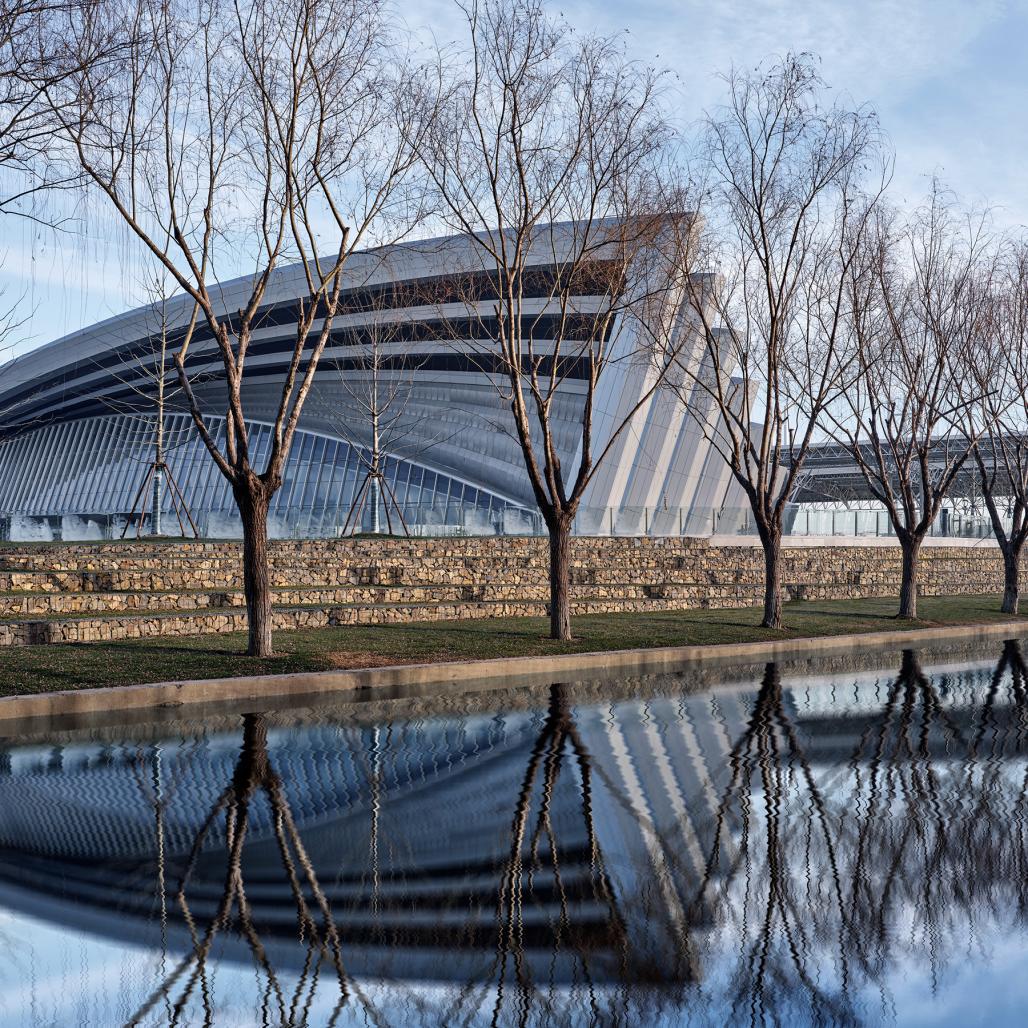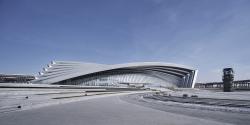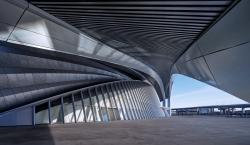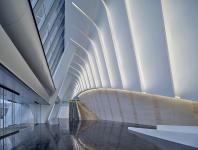The Origin of Renovation - From Railway Station to Museum
From a typological point of view, the space of the traffic building and the exhibition building have a natural commonality. The tall waiting room and platform space of the railway station are suitable for transformation into exhibition space. The transformation of abandoned train stations into other functions has long been an international precedent. The Musée d'Orsay in Paris is the most successful example.
After the Yellow (Bo) Sea Migratory Bird Habitat was officially included in the World Heritage List, Yancheng urgently needed a window to display wetland culture to the outside world. The railway station is adjacent to the newly built wetland park. After being transformed into a wetland museum, it will become a new landmark for displaying Yancheng wetland culture.
Renovation Strategies - A Dialogue on the Inheritance of Old and New Buildings
The original railway station adopts a space truss structure, and the local floor height is low, which is difficult to meet the exhibition requirements. The renovation design retains the lower concrete structure, removes the existing grid, and adds a steel structure roof to meet the needs of use. A large-span truss is used to strengthen the reticulated shell structure, and the roof shape can be realized without moving the original structure and foundation.
In terms of spatial relationship, the design continues the architectural scale and spatial relationship of the original railway station, refines the original architectural language, and creates a novel and modern architectural image. The public hall of the museum uses the existing building structure to create an open and transparent urban public living room.
Technical realization - design system to ensure a high degree of completion
In order to maximize the transparency of the building's facade, the curtain wall design adopts a steel frame system with load-bearing top and bottom. The high-precision steel profiles are only connected to the main structure at the top and the ground, and no other structural fulcrum is required in the middle. The steel column up to 24m is exposed, and the visual effect and structure of the curtain wall are expressed in a unified manner.
The roof modeling takes the original building corner as the starting point, uses the tangent of the arc line as the direction to generate the contour line, and forms a rhythmic and unified roof shape through the gradient technique. The silver-white linear elements also echo the intention of the feathers of the red-crowned crane, the protected animal of Yancheng Wetland.
In the program design stage, the structural engineer intervenes in advance to cooperate with the architect's modeling design. From the initial folded plate plan to the grid plan, the hexagonal truss contact truss plan was finally adopted. All majors cooperate closely to ensure the consistency of roof shape and structure.
At the same time as the renovation of the railway station building, the original station square and waiting platform were also retained and used. The square in front of the station and the entry ramp were transformed into a city square, and the waiting platform was transformed into an outdoor exhibition area. At the same time, the original railway tracks, as the city axis, connect the museum area with the high-speed rail new city area and become the most important part of the entire urban design.
With the advent of the era of high-speed rail, the old railway station in the city gradually lost its original transportation function. How to transform the railway station to make it play a new role is a problem facing many cities. The case of Yancheng Railway Station provides a new mode of renovation of existing buildings.
2019
2021
Client: Yancheng Railway Investment Development Co., Ltd.
Design master control: DuShe Architectural Design Co. Ltd., Shanghai
Architectural Design: DuShe Architectural Design Co. Ltd., Shanghai
Cooperative design: Arcplus Institute of Shanghai Architectural Design & Research(Co.,Ltd.)
Interior Design: DuShe Architectural Design Co. Ltd., Shanghai
Landscape Design: DuShe Architectural Design Co. Ltd., Shanghai/Chongqing Widesild Landscape Creative Design Co., Ltd.
Curtain Wall Consultant: BRM Façade Technology (Shanghai) Co., Ltd.
Lighting Design: Shanghai Gradient Lighting Design Co., Ltd.
Logo Design: Allin Design Consulting (Shanghai) Co., Ltd.
Civil Air Defense Design: Yancheng Architecture Design & Research Institute Co., Ltd.
Green Building and Sponge City Consultant: Jiangsu Hancons Energy Saving Technology Co., Ltd.
Wind Tunnel Test: Technology Center of East China Architectural Design and Research Institute Co., Ltd.
Prefabricated Building Consultant: Technology Center of East China Architectural Design and Research Institute Co., Ltd.
Construction party: China Construction Eighth Engineering Division Co., Ltd.
Indoor construction party: Suzhou Gold Mantis Construction Decoration Co., Ltd.
Landscape construction party: Hangzhou Landscape Design Institute Co., Ltd.
Photo credits: Zhang Yong
Design chief: Ling Kege
Architectural design team: Wang Limin, Kong Juntao, Liu Wenchao, Yang Wanghui, Xie Xinzhun, Wang Zhiguo, Zhang Ding, etc.
Interior design team: Kong Juntao, Wang Qianlan, Xie Xinzhun, etc.
Project management: Xu Yanning, Zou Tianchen









